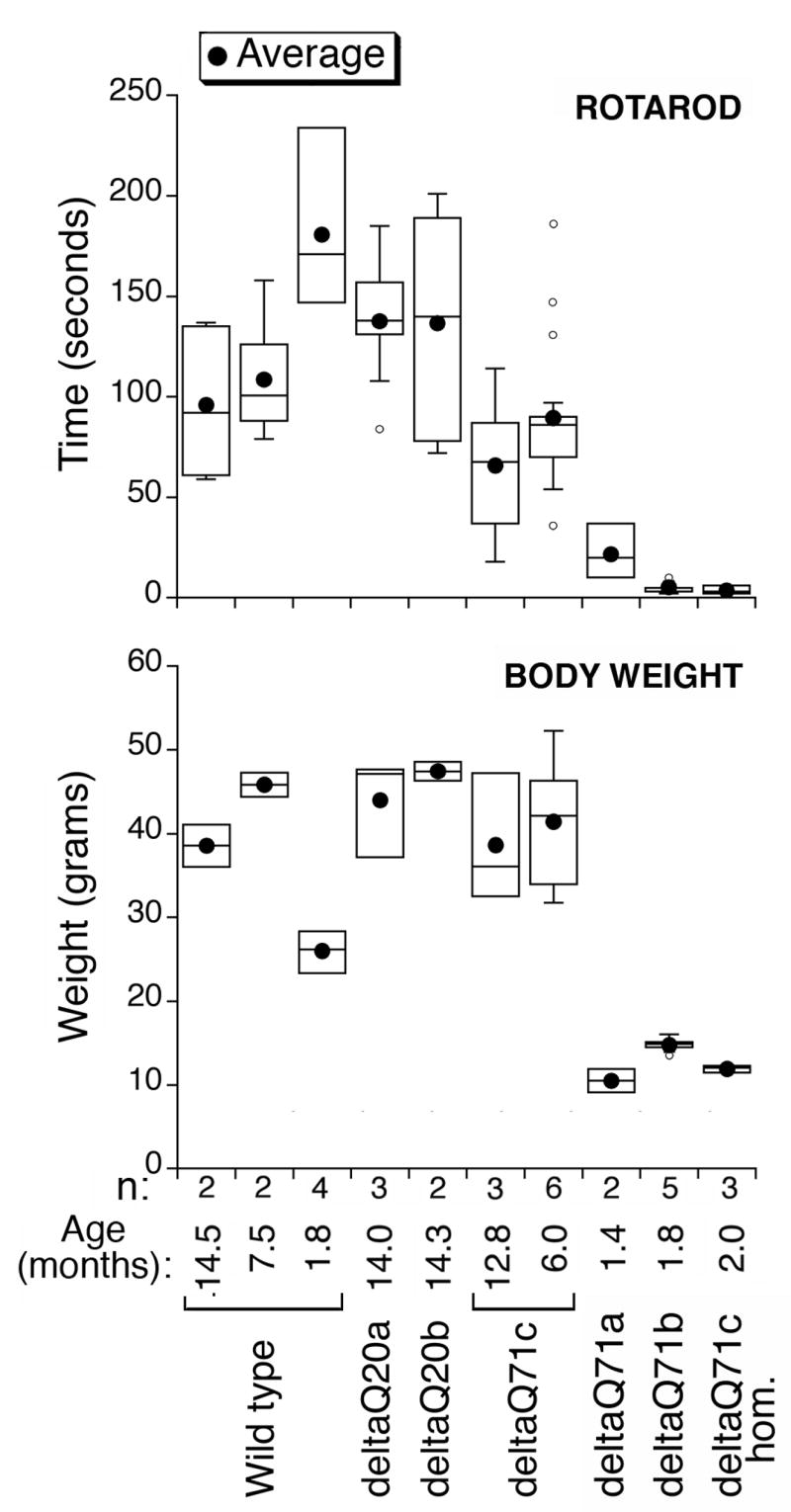Fig 4.

Movement coordination and body weight of deltaQ71 transgenic mice and controls. The indicated number (n) of male wild type or transgenic mice at the age listed were subjected to weight measurements and the rotarod test. The values obtained for a given group of males on different trials of these tests and on consecutive days were pooled and represented in a box plot using KaleidaGraph. The black circle represents the average, the line dividing the box the median, one-fourth of the data falls between the bottom of the box and the median, and another one-fourth between the median and the top of the box. The lines attached to the box extend to the smallest and the largest data values. Outliers are indicated as small circles and defined as values smaller than the lower quartile minus 1.5 times the interquartile range, or larger than the upper quartile plus 1.5 times the interquartile range. DeltaQ20a, deltaQ20b, and deltaQ71c hemizygotes had the body weight and rotarod performance of wild type mice. DeltaQ71c homozygotes (deltaQ71c hom), deltaQ71a and deltaQ71b hemizygotes had weight loss, and a poor performance in the rotarod test possibly due to movement coordination problems.
